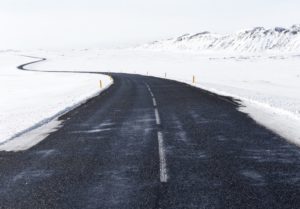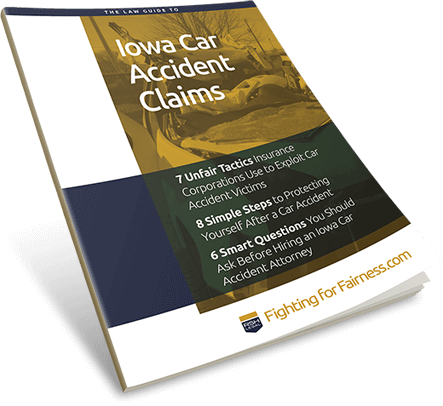
With winter weather finally upon us (after a thankfully mild November), winter driving can present a number of challenges because of snow, ice, or slush. Being prepared when winter weather strikes will help to avoid a crash and keep you and your passengers safe. Follow these tips to make sure you and your vehicle are ready for Iowa winter driving conditions.
Before you drive: Make sure your vehicle is winter ready
Snow is a great reminder to take your vehicle to get serviced for a tune-up and maintenance. Make sure that your tires are in good condition and are properly inflated. Check your wipers and wiper fluid to make sure that you can clear any snow or ice off your windshield. Include in your vehicle a winter emergency kit that includes an ice scraper, a bag of sand or salt, a flashlight, a blanket, jumper cables, and a first aid kit. This kit can help keep you safe in an emergency.
Don’t wait too long between gas station stops
While frequent trips to the gas station is not appealing in subzero temperatures, in the winter it is important to make sure you keep your gas tank at least half filled. This will allow you to keep your engine running as a heat source if you and your vehicle become stuck or stranded.
Keep up to date with weather conditions
Staying informed about weather conditions can help you make smart decisions about whether it is safe to drive. Local news stations, weather websites, and weather apps can provide helpful information about the timing of incoming storms and the condition of the roadways. If you decide to drive, these tools can help you plan the best route and the time needed to make it to your destination safely.
While you drive: Decrease your speed
Speed limits are in place for roads when they are in normal, dry conditions. Turning, accelerating, and stopping all take more time when the road is covered in snow, ice, or slush. Decreasing your speed while you drive will give you more time to react. Exercise extra caution when traveling over bridges and overpasses because they are commonly the first areas to become icy.
Be alert for other drivers
Visibility is often decreased when driving in winter weather conditions. Make sure that you stay alert and increase the distance between your vehicle and other vehicles. This will give you more time to slow down or stop if needed.
If an emergency occurs: Make sure you are out of harm’s way
If your vehicle is in a safe location, stay in your vehicle but turn on your hazard lights. You can continue to run your heat for ten minutes every hour but ensure that your exhaust pipe is not covered by snow or ice to decrease the risk of carbon monoxide poisoning. If you cannot move your vehicle to a safe location, exit your vehicle, go to an area that is safe, and call for help. Grab your blanket from your vehicle’s winter emergency kit to keep yourself warm.
Safe travels!




